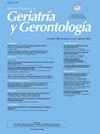Evaluating the evidence for sensor-based technologies and medical devices in fall prevention among hospitalized older adults: A systematic review
Q3 Medicine
引用次数: 0
Abstract
Introduction
Falls among hospitalized older adults increase morbidity, prolong hospital stays, and raise healthcare costs. Sensor-based technologies and medical devices are emerging tools for fall prevention, but their clinical effectiveness remains uncertain. This systematic review aimed to assess their effectiveness in reducing inpatient falls, staff workload, and physical restraint use in hospitalized older adults.
Methodology
This review followed PRISMA guidelines and was registered in PROSPERO (CRD42025645616). A comprehensive search of five databases (MEDLINE, EMBASE, CINAHL, Academic Search Complete, Web of Science) and two clinical trial registries (ClinicalTrials.gov, ICTRP) was conducted for RCTs published between January 2000 and January 2025. Eligible studies were RCTs evaluating sensor-based interventions in hospitalized patients aged ≥65 years in acute or rehabilitation settings. The primary outcome was inpatient falls. Secondary outcomes included physical restraint use, staff involvement in fall prevention tasks and healthcare resource utilization. Two reviewers independently screened records in Covidence, resolving conflicts with a third reviewer.
Results
Of 2939 records screened, 10 full-text articles were reviewed, but none met all inclusion criteria. Most were excluded due to unsuitable populations, settings, interventions, or lack of isolated analysis of sensor-based technologies. No RCTs specifically evaluating the standalone impact of such technologies on inpatient fall prevention in older adults were identified.
Discussion
Despite the growing adoption of sensor-based technologies in hospitals, no RCTs have evaluated their isolated clinical effectiveness for fall prevention in older inpatients. High-quality clinical trials are urgently needed to inform evidence-based implementation.
评估基于传感器的技术和医疗设备在住院老年人中预防跌倒的证据:一项系统综述
住院老年人跌倒增加了发病率,延长了住院时间,并增加了医疗费用。基于传感器的技术和医疗设备是预防跌倒的新兴工具,但其临床效果仍不确定。本系统综述旨在评估其在减少住院老年人跌倒、工作人员工作量和身体约束使用方面的有效性。方法:本综述遵循PRISMA指南,在PROSPERO注册(CRD42025645616)。对2000年1月至2025年1月间发表的随机对照试验进行了5个数据库(MEDLINE, EMBASE, CINAHL, Academic search Complete, Web of Science)和两个临床试验注册(ClinicalTrials.gov, ICTRP)的综合检索。符合条件的研究是评估≥65岁急性或康复住院患者基于传感器干预措施的随机对照试验。主要结局是住院患者跌倒。次要结果包括身体约束的使用、工作人员对预防跌倒任务的参与和保健资源的利用。两名审稿人独立筛选了冠状病毒的记录,解决了与第三名审稿人的冲突。结果在筛选的2939篇文献中,有10篇全文被纳入,但没有一篇符合全部纳入标准。由于不适合的人群、环境、干预措施或缺乏对基于传感器的技术的孤立分析,大多数被排除在外。没有专门评估此类技术对老年人住院患者跌倒预防的单独影响的随机对照试验被确定。尽管医院越来越多地采用基于传感器的技术,但没有随机对照试验评估其在老年住院患者中预防跌倒的单独临床效果。迫切需要高质量的临床试验,为循证实施提供信息。
本文章由计算机程序翻译,如有差异,请以英文原文为准。
求助全文
约1分钟内获得全文
求助全文
来源期刊

Revista Espanola de Geriatria y Gerontologia
Medicine-Medicine (miscellaneous)
CiteScore
1.90
自引率
0.00%
发文量
62
审稿时长
85 days
期刊介绍:
Una revista de gran prestigio por sus artículos originales de investigación y revisiones. Permite cubrir todas las áreas de la medicina pero siempre desde la atención al paciente anciano, y está presente en los más reconocidos índices internacionales.
 求助内容:
求助内容: 应助结果提醒方式:
应助结果提醒方式:


